
CLIMATE SCIENCE: PRIORITIZING THE PLANET
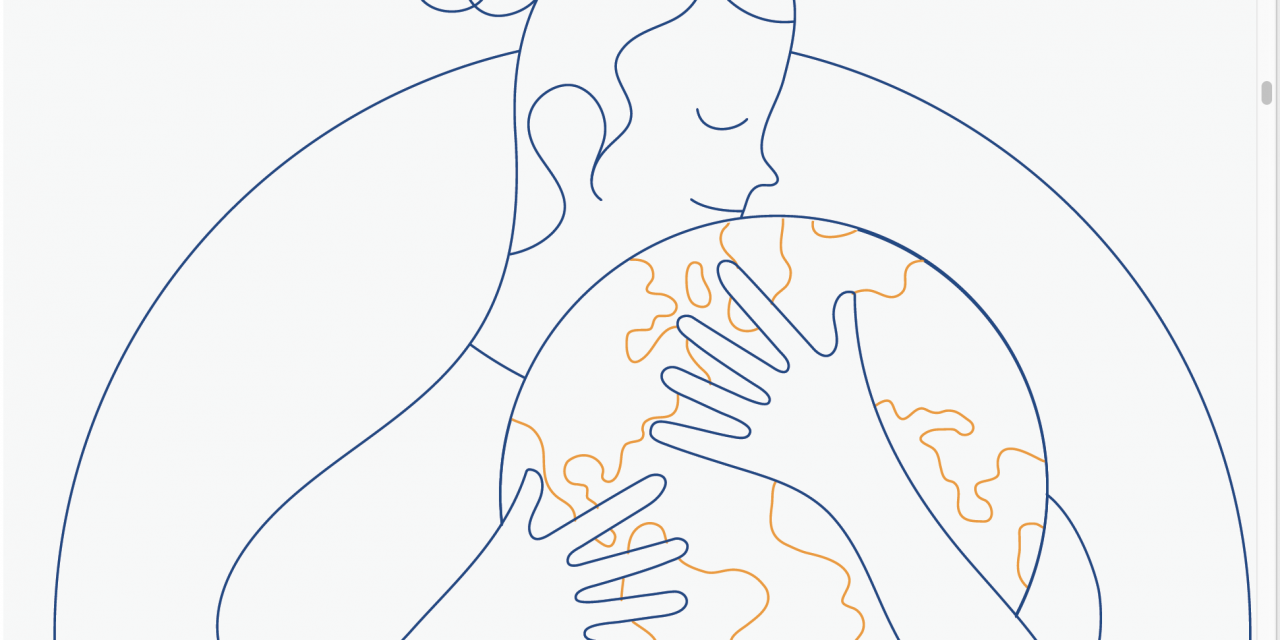
Protecting our planet will be one of mankind’s greatest challenges in the decades ahead. The alumni featured here are working to address some of the challenges—from establishing global collaborative efforts to protecting fragile ecosystems to making sure that the funds needed to address environmental problems are distributed equitably. This article is the first in what we hope will become an ongoing series about Milton alumni who are working in this critical field.
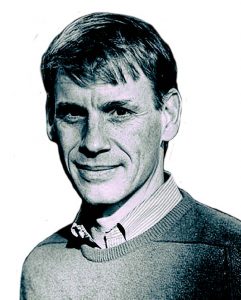 PLANETARY HEALTH: SAM MYERS ‘83
PLANETARY HEALTH: SAM MYERS ‘83
As a young physician working on health and conservation projects around the world, SAM MYERS ’83 witnessed up close how mankind’s interactions with nature—the air we breathe, the water we drink, and the soil that helps feed us—were affecting human health. If we were to effectively respond to the harm human activity was causing, Myers believed a more unified approach was needed.
“Trying to address the pace and scale of human disruption of natural systems and the impacts of that disruption on our own health and well-being at the level of projects, one community at a time, was not going to work,” he says.
In 2016, with support from the Rockefeller Foundation, Myers launched the Planetary Health Alliance (PHA). Based at the Harvard T. H. Chan School of Public Health, the program is what Myers describes as “the connective tissue in bringing the field of planetary health together.”
In just over five years, PHA has grown to include more than 210 organizations in more than 45 countries. Among them are universities and research institutes and both nongovernment and government agencies. The program has also formed networks with clinicians and students from around the world and offers a rich source of research and educational materials for those wanting to develop courses, lectures, and workshops on planetary health. A PHA blog and a monthly newsletter keep members updated.
Last year, Myers, with co-editor Howard Frumkin, published Planetary Health: Protecting Nature to Protect Ourselves, the first textbook for this young field. The book explores how changes to Earth’s natural systems are affecting human health and provides some solutions.
Myers was a student when his interest in the natural world was shaped by two preeminent scholars: physician and biologist Lewis Thomas, whose writings Myers was introduced to at Milton, and evolutionary biologist E.O. Wilson, who advised him as a Harvard undergraduate to study medicine as a way of exploring the connections between nature and natural systems and human health.
“The problems facing humankind are so much bigger than climate change,” says Myers, who is also a principal research scientist in the Chan School’s Department of Environmental Health. “Even if we decarbonize the energy economy, we’d still be driving the sixth mass extinction of life on Earth; we’d still have a huge problem with air, water, and soil pollution. It’s really not climate change, it’s ‘everything change,’ and all these large-scale anthropogenic changes are interacting with each other to affect poor conditions for health.”
“And it’s not just about innovation and technology,” he adds. “We need to live differently. We need to reinvest our relationship to nature with the kind of reverence and awe that so many people feel toward the natural world. It’s already too late for some species. There already has been significant human suffering around the world associated with global environmental changes and there will continue to be very significant human suffering.”
Myers is optimistic, however, as he sees movements such as the Extinction Rebellion and the School Strike Movement spring up around the world. “A lot of the solutions are right here in front of us, and they’re starting to be picked up,” he says. “The question is, How fast are we going to act? Obviously, the sooner and the more profoundly we react, the less suffering we will see, so the question is, How quickly can we achieve that course correction?
“One of the interesting things is there’s absolutely no set of skills that are not relevant to moving us toward the Great Transition [a vision for a just and sustainable global future], and everyone can be part of it,” he says. “Whether you’re an artist or a writer, or you’re going to be a lawyer, or be in government, or in engineering and technology, or science, all those disciplines are going to be really central.
“To me, it’s enormously exciting, because there’s really no reason why we can’t have our grandchildren living in a world where things look as good as they’ve ever looked for human beings and where there’s actually more room every decade for the rest of the biosphere.”
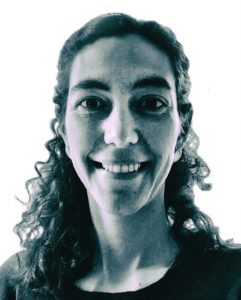 COLOMBIA’S FRAGILE ECOSYSTEMS: BEATRIZ (TIZ) MOGOLLÓN ’04
COLOMBIA’S FRAGILE ECOSYSTEMS: BEATRIZ (TIZ) MOGOLLÓN ’04
Colombia, one of the most biodiverse countries in the world, is home to several important ecosystems, from the Amazon rainforest in the south to the tropical dry forests of the Caribbean in the north to the flooded savannas of the Orinoco Basin in the eastern plains. Although the country monitors deforestation of the tropical rainforest, the other ecosystems receive little attention.
As the environmental governance lead in USAID’s Natural Wealth Program, BEATRIZ MOGOLLÓN ’04 is helping to monitor them. “These ecosystems are being looked to as the next agricultural frontier for Colombia, but the rate of transformation of change is really very rapid,” she says. “The tropical dry forests are disappearing quickly as landowners cut down large swaths of trees, and the flooded savannas are threatened by the large-scale production of crops such as rice, oil palm, and rubber.”
Mogollón grew up with a deep appreciation for the outdoors. “Early on, I was exposed to the natural world.” she says. For years, her father, José Vicente Mogollón Vélez, a former minister of the environment in Colombia, operated a shrimp export business on the Caribbean coast. “We would spend our summers there horseback riding or walking through the mangroves,” Mogollón says. “The land was just full of beautiful vegetation.”
The program’s approach to protecting these ecosystems is twofold: helping integrate biodiversity conservation into municipal and departmental 12-year land-use and four-year development plans, and creating a monitoring system that can track changes to the ecosystems. Working from Bogotá and from regional offices in the Caribbean and Orinoco regions, Mogollón and her team advise local authorities to help reduce the threats to these ecosystems. “We might identify environmental assets to authorities and say, ‘It’s best not to develop here,’ or ‘Put certain conditions on development here, because this is an important area for biodiversity and ecosystem services.’”
The team might also weigh in on current practices. “A classic practice in the Caribbean and in other parts of the world is ‘slash and burn,’” she says. “We might explain to environmental authorities, ‘You don’t need to slash and burn more of your land—just make the land that you’ve already cut down more productive.’”
Using satellite imagery, the team tracks changes to the land cover and provides weekly alerts to local authorities. “We want to ensure that the people who are making these transformations are not encroaching in areas where they shouldn’t be,” Mogollón says. “There are all these drivers of deforestation: land grabbing, expanding the agricultural frontier for cattle ranching, illegal mining, logging, and illicit crop production. From an institutional point of view, there needs to be a clear process of how to decrease deforestation, where providing accurate and timely information is key.”
“The challenges of these two ecosystems is that the tropical dry forest is deciduous,” she says, “so there comes a time each year when all the leaves fall off, and this means the sensors that are developed don’t really catch or monitor those ecosystems. And the flooded savannas are not forested, but, nonetheless, it is an important ecosystem for biodiversity, flood regulation, and carbon sequestration.”
When the USAID Natural Wealth Program ends, in July 2022, Mogollón expects to leave behind processes that can be sustained over time. “We want to create a lasting impact, one that helps change the way people think about their environment,” she says. “We focused a lot on capacity and on setting up a program in a way that transfers capacity to local environmental authorities. That way they can make better decisions on how they manage their land in a sustainable way.”
And Mogollón will continue to focus her career on protecting Colombia’s environment. “My parents raised us to get our training abroad, but to return and give back to the country,” she says. “I’ve always felt a responsibility to come back.”
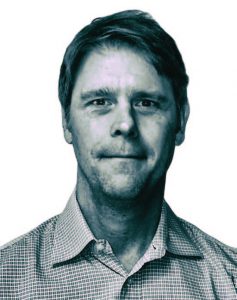 UNTYING THE KNOT: THEO SPENCER ‘84
UNTYING THE KNOT: THEO SPENCER ‘84
Years ago, THEO SPENCER ’84 was a business reporter for Fortune magazine when he came across a story that would permanently change the course of his career.
“There was an article in the New York Times about a study on the disparity of asthma rates between Harlem and the Upper East Side,” he recalls. “That really was the tipping point for me, this sense of injustice, that this is wrong. It just motivated me to say, ‘Okay, I’m going to quit my job and find work with an environmental group focused on these issues.’”
For the next 11 years, Spencer worked at the environmental non-profit Natural Resource Defense Council (NRDC) as a senior policy advocate in the organization’s Climate Center. He focused on improving vehicle and power-plant emissions standards, regulating coal-leasing on public lands, decreasing the impact of climate change on water resources, and managing urban climate preparedness initiatives. For many years, he also sat on boards at the Rockefeller Family Foundation and the Water Research Foundation.
He formed his own consulting firm, Spencer Environmental Consulting in 2018, and today he is working with foundations and nonprofits to help bring greater attention and support to community environmental groups, particularly those led by people of color.
“We’re trying to figure out how to get more money, more quickly, to groups on the ground,” says Spencer. “To this day, something like 90 cents on the dollar that’s given to environmental causes ends up going to white-led organizations, many of them the large national groups. Why isn’t more money going to groups led by people of color?”
Spencer points to an area in Texas and Louisiana called Cancer Alley, where fossil fuel facilities— petrochemical refining plants, liquified natural gas export plants, coal-fired power plants, natural gas plants—predominate, and where disproportionately high rates of disease occur.
“There are a lot of local groups, small groups, trying to fight what’s going on there, but they’re very under-resourced,” he says. “Why are these community groups along the Gulf Coast still struggling to get money to do the work to fight these chemical polluting plants?”
Spencer is working to remove some of the obstacles confronting smaller organizations, such as the challenges involved in submitting grant requests and reports. Standardizing these processes, as college applications were standardized, “would make it less cumbersome,” he says. “If you get a grant from the Hewlett Foundation or the Kresge Foundation or the MacArthur Foundation, it can be a pretty bureaucratically intensive process. They want reports every quarter on how you’re using the money. They have all these metrics, and a lot of these small organizations are working on a shoestring. They don’t have grant writers; their staffs don’t have the time to do all that’s required by these large funders.”
Making sure the voices of those in low-income communities are heard is critical to change, says Spencer. “If you want any kind of real change, it has to have grassroots support, instead of just the action being driven by people writing super long, deep policy briefs. Politicians have to be hearing from their constituents, headaches have to be created, people have to be calling their offices and asking for meetings to bring these issues to the forefront.”
Spencer believes the fight to protect the environment has never been more urgent or challenging. “It’s just so sad that the anti-health-and-environment-protection world, which corporations and lobbyists have set up, has been so successful in casting doubt on whether climate change is real,” he says.
Pushing against current trends and working for those disproportionately affected by climate change is what keeps Spencer going. “What has always gotten me the most motivated about working on environmental issues,” he says, “is the sense of injustice and disparities and right versus wrong.”
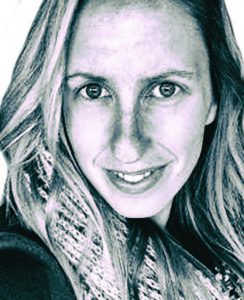 COASTAL RESILIENCE: KATE BRODIE ‘02
COASTAL RESILIENCE: KATE BRODIE ‘02
From her office at the U.S. Army Engineering Research and Development Center (ERDC) in Duck, North Carolina, KATE BRODIE ’02 looks out on the Atlantic Ocean and surrounding coastline. Since joining ERDC as a research oceanographer 10 years ago, Brodie has been tracking the effects of storms on coastal communities as they become more frequent and extreme.
“For many of our low-lying areas—whether that’s a city or a small town or an island—some of these 100- to 200-year events are going to become much more common,” she says. “That’s a little scary for a lot of these communities, but that’s not something that we can change or stop, so the question becomes, How can we look to nature to figure out how we can best adapt to these changing processes, and how can we implement measures that allow our coasts and communities to be resilient to these changes?”
To help communities respond, Brodie and her colleagues are currently focused on enhancing a natural dune system. Using sophisticated remote-sensing techniques, they are increasing their understanding of what happens during a storm: how dunes naturally evolve, how much they erode, how fast they recover, and what is the role of various types of vegetation at trapping sand and growing a dune.
With a better understanding, says Brodie, “we can try to work with nature in the face of this approaching sea level and see what we can do to try to reshape and provide accommodation for that to take place. We can then guide our local communities: How wide does your beach have to be to enable dune growth? How tall a dune do you want for your particular beach? What types of vegetation should you be planting on it? Those are some of the questions that the ERDC is really trying to answer.”
Much of Brodie’s early research was focused on developing the tools and techniques for gathering information. But the technology has become so advanced, she says, that the sensors can now be mounted “just about anywhere.” They are even using drones to capture information.
Helping coastal residents understand the need to adapt can sometimes be a challenge, she says. “One of the things that we struggle with in general with coastal development is that we as humans want to build our house here and put our road here, and we expect our beach to be this wide and this far away. We have these very rigid expectations of how the landscape should be, and we build around that landscape assuming it’s not going to change. “But coastal systems are some of the most dynamic landscapes in the world. I walk my dog down to the beach every day; it looks different every single day. The beach is constantly changing in response to the changing waves, winds, tides, currents. We know those processes are going to change as our climate changes, and so we have to adapt.”
Although Brodie’s job as a research oceanographer is to develop the technology and systems that will help protect these coastal communities, she welcomes the opportunity to speak directly to people about the agency’s work. “When we’re out on the beaches collecting data, people will often stop to ask what we’re doing,” she says. “Every time I get one of those opportunities, I see it as a chance to educate the public about what we’re learning, why we’re doing this research, and how it might help them.
“I have found, as with most things, that the more you can help people understand, the more likely they are to be willing to change. That’s what I have to fundamentally believe in and hope: that the power of information and education will help people evolve toward taking a more adaptive approach to what they want to get out of their coastal resources and what they’re looking for.”
STORY BY SARAH ABRAMS




